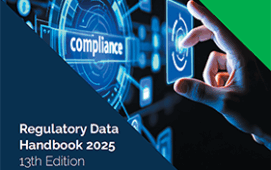
Leading Israeli institution Bank Hapoalim has signed up with Wolters Kluwer to manage its credit risk profile using the firm’s OneSumX solution for risk management. The bank will utilise the software for measuring counterparty credit risk as per Basel III’s Standardised approach for measuring counterparty credit risk exposures (SA-CCR), which first came into force January 2017.
The revised rule is designed to calculate the exposure at default of derivatives, meaning that banks need to carefully consider how to integrate the standard into their overall regulatory approach. The Wolters Kluwer OneSumX solution calculates credit valuation adjustment (CVA), debt valuation adjustment (DVA) and funding valuation adjustment (FVA), enabling exploration of the correlation between credit, market and behavioral risk in an integrated approach. The solution also identifies and estimates the degree of systemic concentration based on counterparty risk and credit exposure analysis and enables compliance with regulatory requirements such as Basel II/III.
“Bank Hapoalim is now successfully using a wide variety of features available in Wolters Kluwer’s OneSumX Credit Risk solution” confirms Uri Yanir, Senior Vice President and Head of Basel II/III Implementation at Bank Hapoalim. “The software is now our main tool for calculating capital ratios.”
In July of this year, Wolters Kluwer launched a software-as-a-service (SaaS) version of its regulatory reporting solution, marking the first time that the company’s OneSumX regulatory software has been made available on the cloud. At the same time, the firm unveiled a substantial upgrade to its OneSumX Regulatory Engine, integrating it with an enhanced data management layer to deliver full data lineage as well as integration with Wolters Kluwer’s OneSumX for Finance and OneSumX for Risk solutions.
Bank Hapoalim is the latest bank to select OneSumX this year, following in the footsteps of Malaysia’s SME Bank and China Merchants Bank in July, US-based Investors Bank in March and Bank of China in February.
Subscribe to our newsletter




